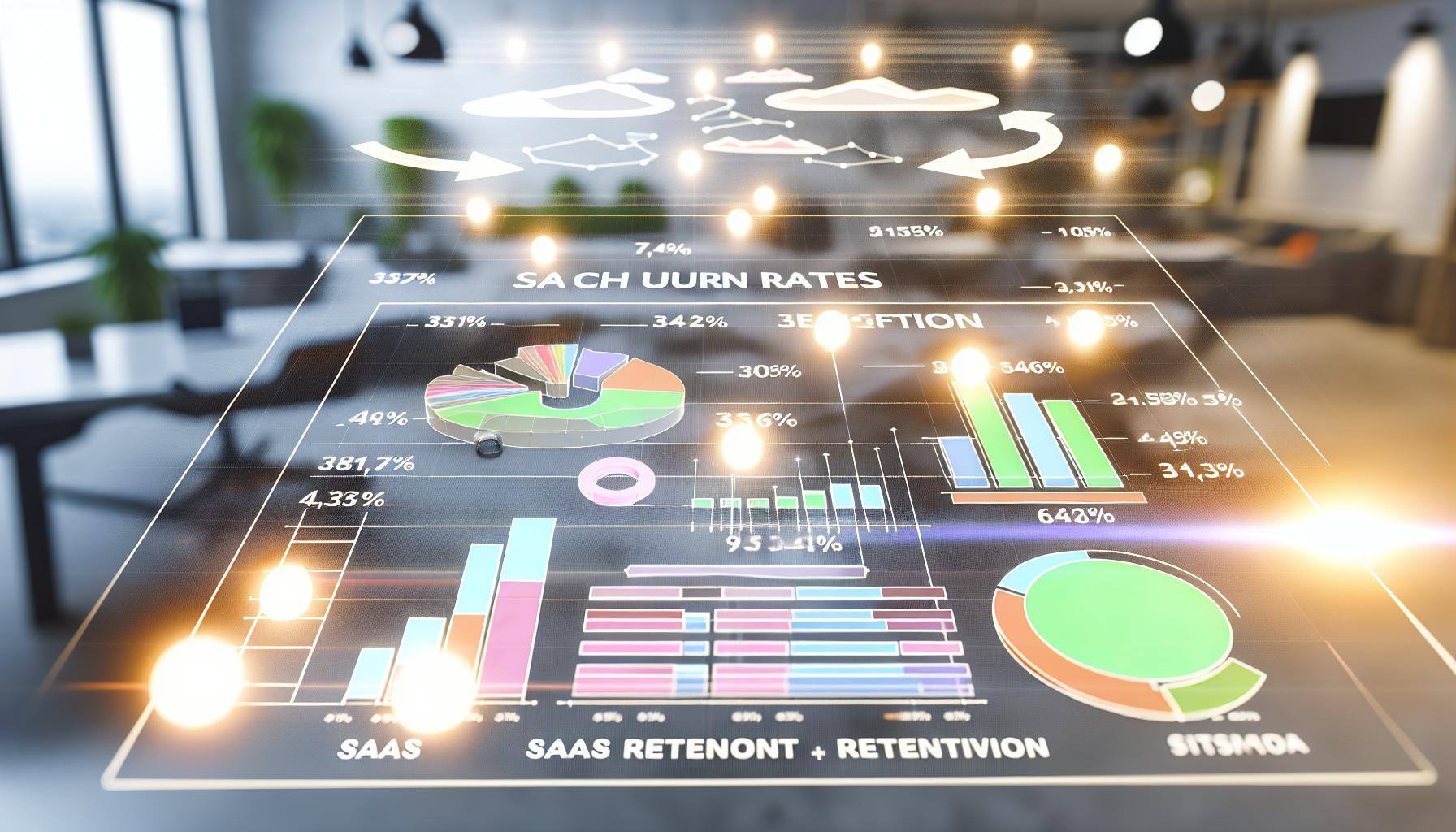Understanding Customer Churn & Retention: Key SaaS Statistics Revealed
In the rapidly evolving world of Software as a Service (SaaS), understanding customer churn and retention is crucial for ensuring your business's...
4 min read
Brian Polackoff
:
Oct 30, 2024 8:16:00 AM

Customer churn, often referred to as customer attrition, is a key metric for businesses, especially in the subscription-based world of B2B SaaS. Understanding the terminology around churn will help you tackle it head-on. In this blog, we’ll explore the various terms used to describe customer churn, including the definition of churn and retention strategies. Then, we’ll show you how Churn Assassin can help reduce churn for B2B SaaS companies.
Churn rate refers to the percentage of customers who stop doing business with a company over a given time period. It’s one of the most basic, yet crucial, metrics for understanding the health of a business. A high churn rate indicates that many customers are leaving, which signals that your product or service may not be meeting their needs. To dive deeper into how to calculate and reduce churn rate, check out our Ultimate Guide to Reducing Churn Rate and Maximizing Revenue for SaaS Businesses.
Churn Rate (%) = (Number of Customers Lost During Period / Total Customers at Start of Period) × 100
Customer attrition is another term for churn. It refers to the loss of customers over time. In B2B SaaS, attrition can have a significant financial impact because losing a customer often means losing a recurring revenue stream.
The retention rate is the percentage of customers a company retains over a certain period. A high retention rate is a positive sign, as it indicates that customers are sticking with the service, leading to longer-term revenue growth. Learn more about how customer retention can boost your growth in our blog on Unlocking Growth Through Customer Retention.
Retention Rate (%) = ((Total Customers at End of Period - New Customers Acquired During Period) / Total Customers at Start of Period) × 100
Voluntary churn happens when a customer decides to cancel their service. Involuntary churn, on the other hand, occurs when a customer leaves unintentionally, often due to issues like expired credit cards or failed payment methods. Both types of churn are important to track and mitigate to effectively reduce overall churn.
In the B2B SaaS world, logo retention refers to the percentage of companies (logos) that stay with a service. It’s a key metric in measuring account-based retention, as many companies serve multiple users from the same organization under one account.
Revenue churn refers to the percentage of revenue lost from existing customers who downgrade or leave your service. It provides a clearer picture of the financial impact churn is having on the business, as not all customers contribute equally to total revenue.
Net revenue retention (NRR) measures the total amount of revenue retained from existing customers over a period, factoring in expansions, downgrades, and churn. NRR above 100% means that the business is growing revenue from its existing customers, even if some customers are leaving.
Net Revenue Retention (%) = ((Starting MRR + Expansion MRR - Contraction MRR - Churned MRR) / Starting MRR) × 100
Customer Lifetime Value (CLV) represents the total amount of revenue a business can expect from a customer over the duration of their relationship. Businesses with higher CLV are typically better positioned to withstand churn because they generate more revenue from each retained customer.
Customer Lifetime Value (CLV) = Average Revenue per Customer × Average Customer Lifetime
A CSQL is a customer who shows signs of being ready for an upsell or expansion. Customer success teams identify these leads through product usage, engagement patterns, or other behavioral data that suggest the customer is ready for additional products or services.
Expansion revenue refers to additional revenue generated from existing customers through upselling, cross-selling, or adding features to their existing plan. This type of revenue helps offset churn and can contribute to positive NRR.
In B2B SaaS, an entire company (or account) may leave, rather than just an individual user. This is account-based churn, and it’s critical to track because losing a full account can have a significant financial impact on your business.
Onboarding churn occurs when customers leave during the initial stages of using your product. A poor onboarding experience can lead to dissatisfaction, causing customers to churn before they’ve had a chance to see the full value of the service. To avoid onboarding churn, effective onboarding strategies are crucial—learn more in our blog Mastering Customer Success in B2B SaaS.
Downgrade churn happens when customers stay with the product but move to a lower pricing tier or reduce the number of services they use. While these customers haven’t left, the reduction in revenue can still be detrimental to growth.
Reducing customer churn can seem daunting, but with the right tools, it's entirely manageable. Churn Assassin is a powerful tool designed specifically to help B2B SaaS companies tackle churn effectively. By combining predictive analytics, behavioral tracking, and cohort analysis, Churn Assassin provides early warning signs when customers are at risk of leaving. Here’s how it can help reduce churn:
Proactive Retention: Churn Assassin allows you to identify customers who are showing signs of disengagement. By spotting these red flags early, your customer success team can reach out and re-engage clients before they cancel their subscriptions.
Involuntary Churn Prevention: Through automated alerts for failed payments or expiring credit cards, Churn Assassin helps prevent involuntary churn. You can quickly resolve these issues before customers are lost due to simple payment failures.
Customer Health Scoring: The platform generates customer health scores based on product usage, support requests, and satisfaction metrics. This helps you focus your retention efforts on customers who need the most attention.
Cohort and Churn Analysis: By grouping customers into cohorts based on signup date, engagement levels, or other factors, Churn Assassin helps you understand which segments are most at risk of churning. This allows you to design tailored retention strategies for different customer groups. For a more in-depth look at effective churn strategies, you might find our blog on Mastering SaaS Churn Strategies insightful.
Upsell Opportunities: Churn Assassin’s predictive insights also help identify opportunities for upselling or cross-selling, increasing expansion revenue and offsetting churn.
If you've noticed more customers leaving lately, you're not alone—and there's a solution. Reducing churn in the B2B SaaS space is critical to maintaining steady revenue growth. Churn Assassin empowers businesses to stay ahead of churn, improve customer satisfaction, and retain their most valuable accounts.
Ready to see how reducing churn can boost your growth? Sign up for a free trial of Churn Assassin and get churn predictions and renewal probability scores so you can get control of account churn, often 3 to 6 months before the client issues a cancellation notice.

In the rapidly evolving world of Software as a Service (SaaS), understanding customer churn and retention is crucial for ensuring your business's...

In the fast-paced world of B2B SaaS, keeping your customers is the difference between thriving and merely surviving. High churn rates can drain your...

In the world of SaaS companies, keeping your customers from leaving is super important. When customers leave, it directly impacts your business's...